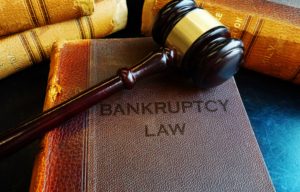
While Section 365(n) of the Bankruptcy Code applies to intellectual property licenses, the definition of “intellectual property” is not found within that section of the Bankruptcy Code; rather, the definition is found in Section 101(35A) of the Bankruptcy Code. However, within this definition, Congress failed to explicitly include trademarks. The Bankruptcy Code definition of “intellectual property” means (i) trade secret; (ii) invention, process, design, or plant protected under title 35; (iii) patent application; (iv) plant variety; (v) work of authorship protected under title 17; or (vi) mask work protected under chapter 9 of title 17; to the extent protected by applicable nonbankruptcy law. Conspicuously absent from the Code’s definition are trademarks and trade names.
Some courts have reasoned by negative inference that the omission of trademarks from the definition of intellectual property indicates that Congress intended to exclude trademarks from the protection of Section 365(n). See, e.g., Raima UK Ltd. v. Centura Software Corp. (In re Centura Software Corp.), 281 B.R. 660, 674–75 (Bankr.N.D.Cal.2002) (“Because Section 365(n) plainly excludes trademarks, the court holds that [the licensee] is not entitled to retain any rights in [the licensed trademarks] under the rejected … [t]rademark [a]greement.”); In re HQ Global Holdings, Inc., 290 B.R. 507, 513 (Bankr.D.Del.2003) (“[S]ince the Bankruptcy Code does not include trademarks in its protected class of intellectual property, Lubrizol controls and the Franchisees’ right to use the trademark tops on rejection.”); In re Old Carco LLC, 406 B.R. 180, 211 (Bankr.S.D.N.Y.2009) (holding that “[t]rademarks are not ‘intellectual property’ under the Bankruptcy Code” and, therefore, Section 365(n) did not entitle licensees to retain their rights with respect to trademarks or to continue using them post-rejection). Other courts have held that the negative inference is improper. For support, some courts cite to legislative history which requires a more equitable approach.
T]he bill does not address the rejection of executory trademark, trade name or service mark licenses by debtor-licensors. While such rejection is of concern because of the interpretation of section 365 by the Lubrizol court and others, see, e.g., In re Chipwich, Inc., 54 Bankr. Rep. 427 (Bankr.S.D.N.Y.1985), such contracts raise issues beyond the scope of this legislation. In particular, trademark, trade name and service mark licensing relationships depend to a large extent on control of the quality of the products or services sold by the licensee. Since these matters could not be addressed without more extensive study, it was determined to postpone congressional action in this area and to allow the development of equitable treatment of this situation by bankruptcy courts. * * * Nor does the bill address or intend any inference to be drawn concerning the treatment of executory contracts which are unrelated to intellectual property.
- Rep. No. 100-505, at 5.
This was the conclusion reached in In re Crumbs Bake Shop, Inc., 522 B.R. 766 (Bankr.D.N.J.2014). Here, the court concluded that Congress intended the bankruptcy courts to exercise their equitable powers to decide, on a case by case basis, whether trademark licensees may retain the rights listed under Section 365(n). The Court found in its instant case that it would be inequitable to strip its licensees of their rights in the event of a rejection, as those rights had been bargained away by debtors. Id. at 722.
The court also found support for its decision in the Seventh Circuit decision in Sunbeam Products, Inc. v. Chicago Am. Mfg., LLC, 686 F.3d 372 (7th Cir.2012). Here, the court iterated that rejection of a trademark license did not strip away the licensee’s right to use the trademark. Id. at 377. In doing so, the Seventh Circuit focused on the text of Section 365(g), under which rejection is deemed a breach of contract, and the unfulfilled obligations of a debtor-licensor are turned into a damages award. Id. The Seventh Circuit noted that “[o]utside of bankruptcy, a licensor’s breach does not terminate a licensee’s right to use intellectual property.” Id. at 376. Moreover, in the real estate context “a lessor that enters bankruptcy could not, by rejecting the lease, end the tenant’s right to possession and thus re-acquire premises that might be rented out for a higher price. The bankrupt lessor might substitute damages for an obligation to make repairs, but not rescind the lease altogether.” Id. at 377. The court specifically noted that “nothing about this process implies that any rights of the other contracting party have been vaporized.” Id.
The debtor in Crumbs Bake Shop argued that following the Seventh Circuit analysis would leave licensor with little ability to control the quality of products or services, as is notably important in trademark licensing. However, the court found that there are protections in place, outside of bankruptcy, that give rise to the incentive for licensees to maintain a certain standard of quality in using the licensor’s trademark.
[A] licensee’s sale of trademarked goods of a quality differing from the licensor’s set standards constitutes trademark infringement and unfair competition. As a result, “there are already incentives for licensees to maintain the licensor’s quality control provisions lest a court find the licensee liable for infringement. The licensee is also, in effect, warranting to the public that its goods are of the same level of quality that the trademark signifies. Thus, the mechanism of market forces and the anti-fraud laws make it highly unlikely that licensees will abandon the quality standards to which they originally agreed.”
Crumbs Bake Shop, 522 B.R. at 773 (quoting David J. Jenkins, Comments Licenses, Trademarks, and Bankruptcy, Oh My: Trademark Licensing and the Perils of Licensor Bankruptcy, 25 J. Marshall L. Rev. 143, 162-64 (1991).
In re Tempnology, LLC, 879 F.3d 389 (1st Cir.2018) came to an opposite conclusion as that in Sunbeam. It noted that Congress’s principal aim in providing for rejection was to release the debtor’s estate from burdensome obligations that can impede a successful reorganization. Id. at 402. It then noted that the effective licensing of a trademark requires that the trademark owner monitor and exercise control over the quality of the goods sold to the public under cover of the trademark. It explained that “trademarks, unlike patents, are public-facing messages to consumers about the relationship between the goods and the trademark owner. They signal uniform quality and also protect a business from competitors who attempt to profit from its developed goodwill.” Id. The very failure to monitor and exercise this control results in a so-called “naked license,” jeopardizing the continued validity of the owner’s own trademark rights. The court then criticized the Sunbeam decision (referenced below) as follows:
The Seventh Circuit’s approach, therefore, would allow [the licensee] to retain the use of Debtor’s trademarks in a manner that would force Debtor to choose between performing executory obligations arising from the continuance of the license or risking the permanent loss of its trademarks, thereby diminishing their value to Debtor, whether realized directly or through an asset sale. Such a restriction on Debtor’s ability to free itself from its executory obligations, even if limited to trademark licenses alone, would depart from the manner in which section 365(a) otherwise operates. And the logic behind that approach (no rights of the counterparty should be “vaporized” in favor of a damages claim) would seem to invite further leakage.
Id. at 403.
Therefore, the court held that granting trademarks the protections of Section 365(n) “ignores the residual enforcement burden it would impose on the debtor just as the Code otherwise allows the debtor to free itself from executory burdens.” Tempnology noted that this approach also rests on a logic that invites further degradation of the debtor’s fresh start options. “For these reasons, we favor the categorical approach of leaving trademark licenses unprotected from court-approved rejection, unless and until Congress should decide otherwise.” Id. at 404.
Matthew T. Gensburg
[email protected]

